Abstract
Clindamycin palmitate and potassium phenoxymethyl penicillin were evaluated in 103 children with upper respiratory illnesses and pharyngeal group A streptococci, from November 1970 to July 1971. The children were assigned randomly by weight to one of the antibiotic regimens given orally for 10 days. Clindamycin palmitate and potassium phenoxymethyl penicillin dosages were 75 and 125 mg, respectively, in 5 ml tid for children weighing less than 25 kg, and 150 and 250 mg, respectively, in 10 ml bid for children weighing 25 kg or more. Recurrences of the original streptococcal group A, M, and T types within 3 weeks after the end of treatment were classified as failures. The failure rates were: clindamycin palmitate, 10% (5 of 52), and potassium phenoxymethyl penicillin, 18% (9 of 51). Possible drug-related rashes were observed in 8 of 52 clindamycin palmitate-treated patients. The geometric mean minimal inhibitory concentrations of clindamycin and penicillin against 103 isolates of group A streptococci were 0.033 and 0.007 μg/ml, respectively. The serum concentrations about 70 min after ingesting 150 mg of clindamycin palmitate averaged 3.8 μg/ml and after 250 mg of potassium phenoxymethyl penicillin averaged 0.9 μg/ml. Clindamycin palmitate was as effective as potassium phenoxymethyl penicillin in eradicating group A streptococci from the pharynx in tid and bid regimens. Nevertheless, because of its rash-producing tendency in some patients and higher cost, clindamycin palmitate should not be preferred to penicillin for treatment of streptococcal sore throat in the non-penicillin-allergic patient.
Full text
PDF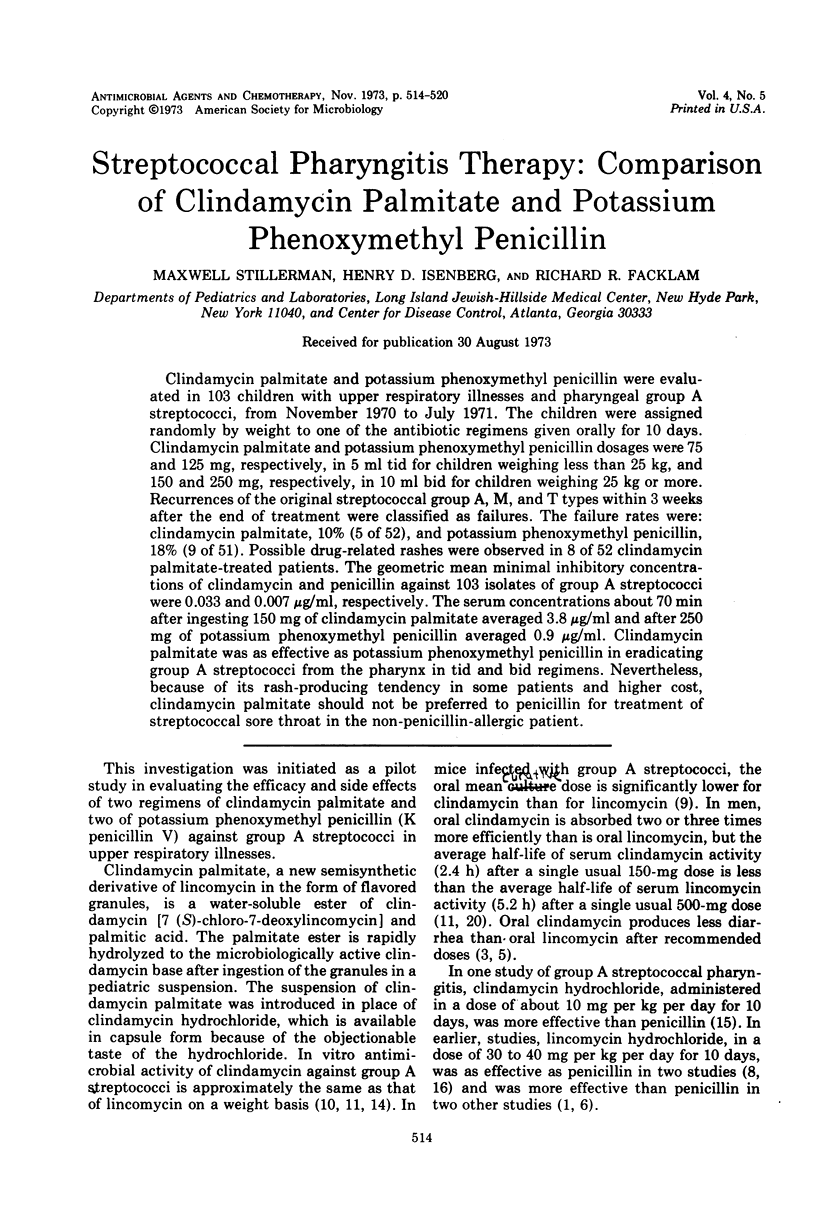
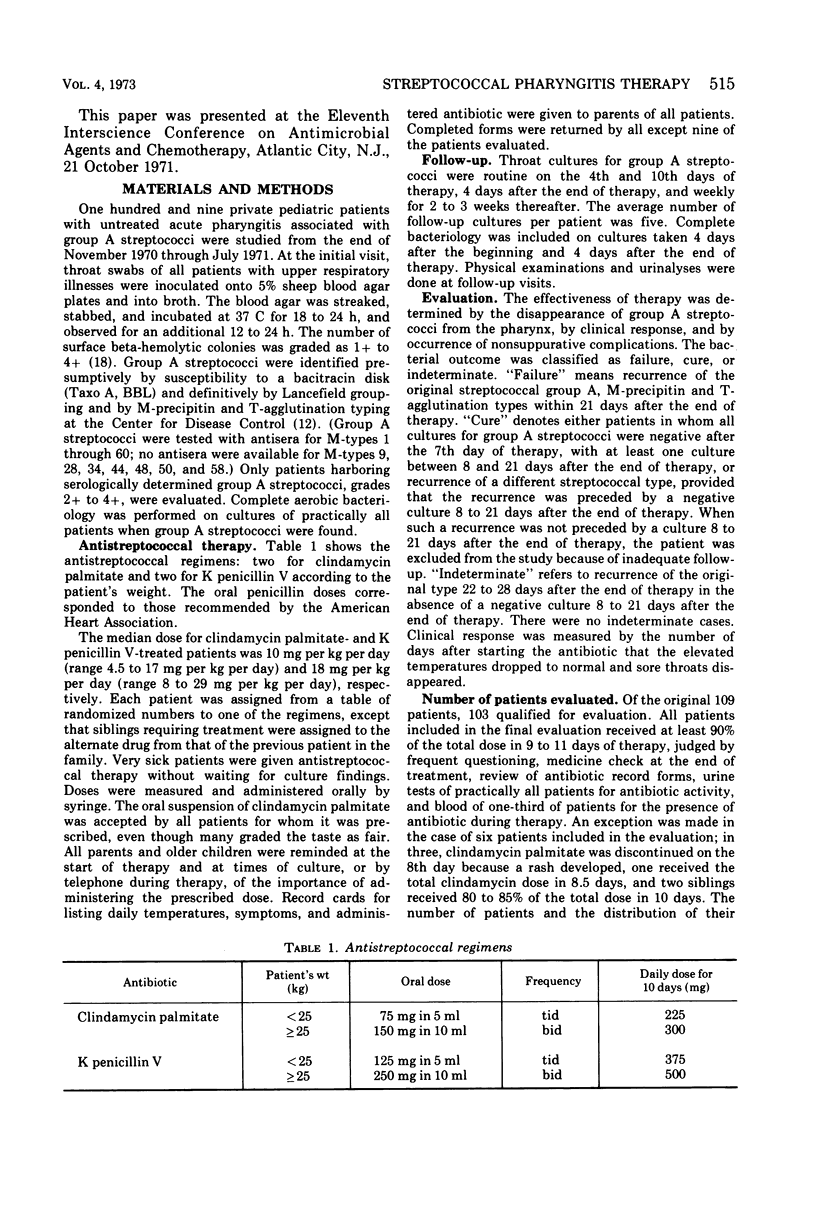
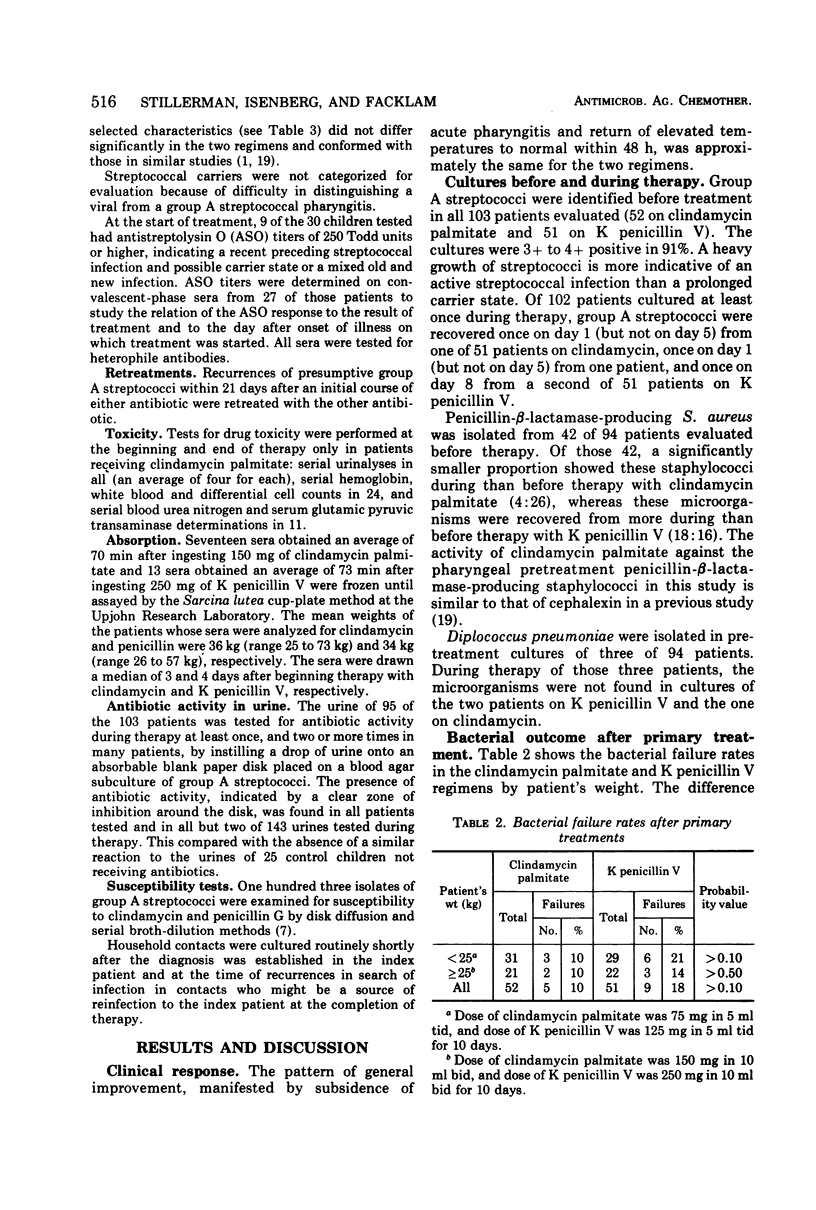
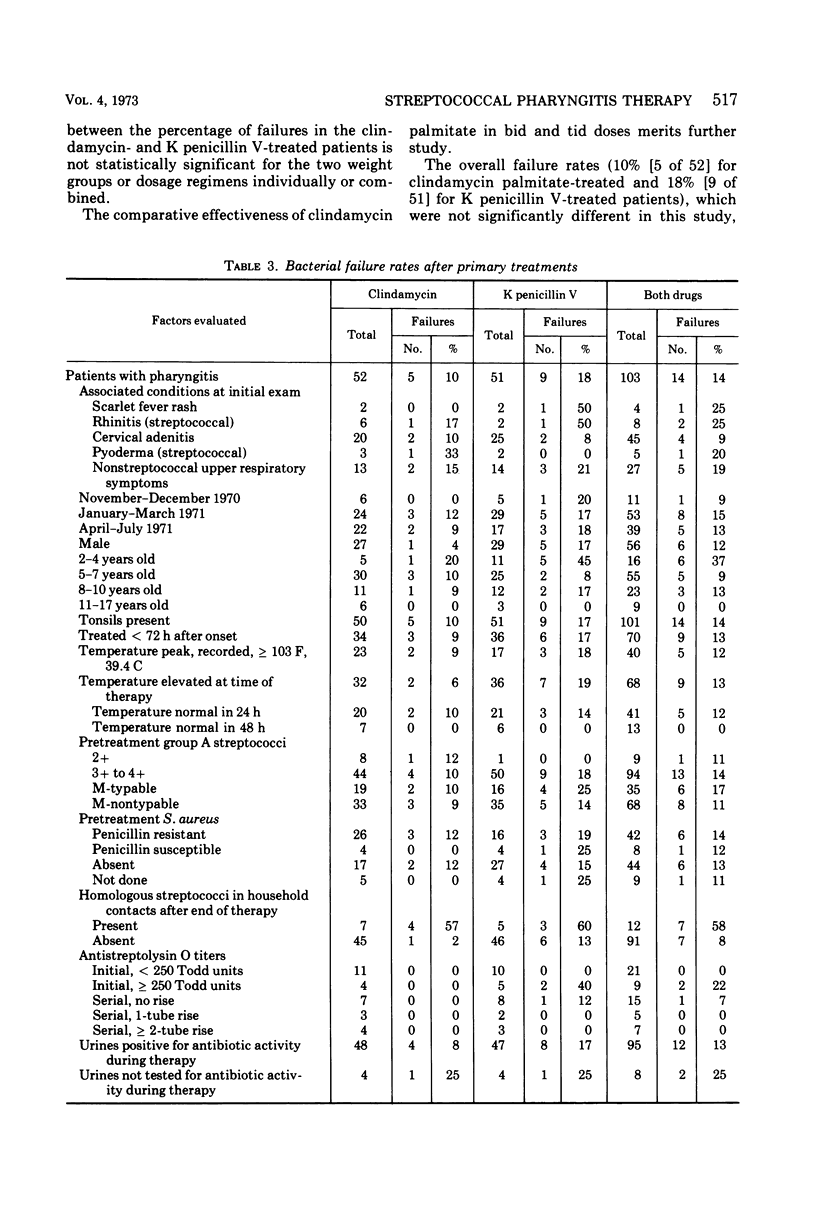
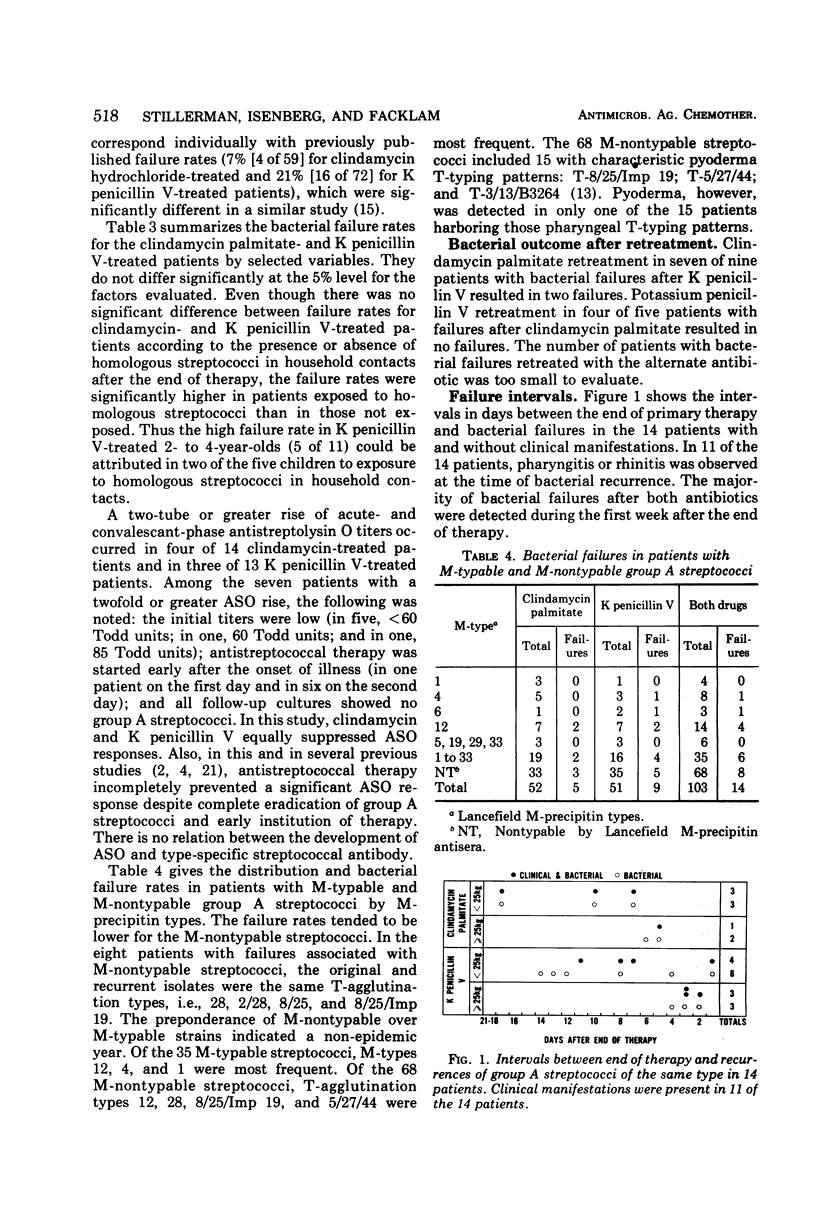
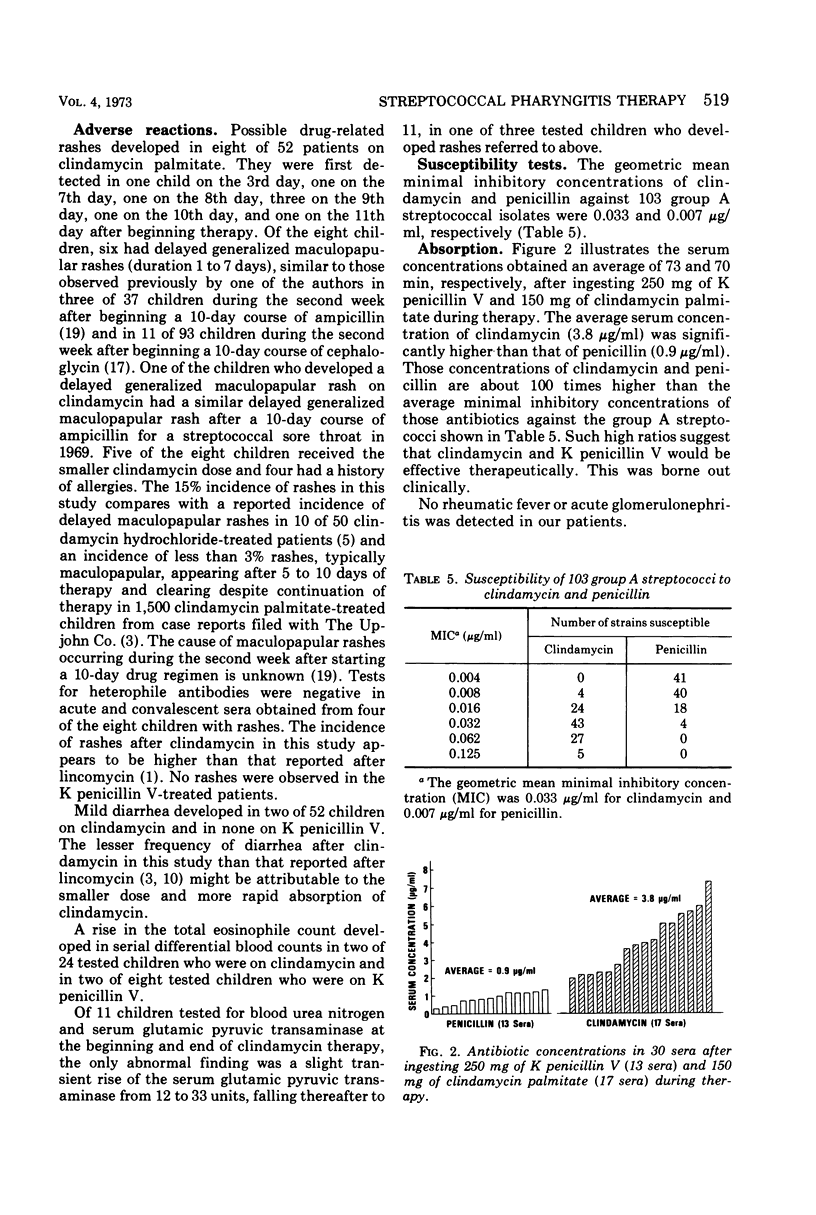
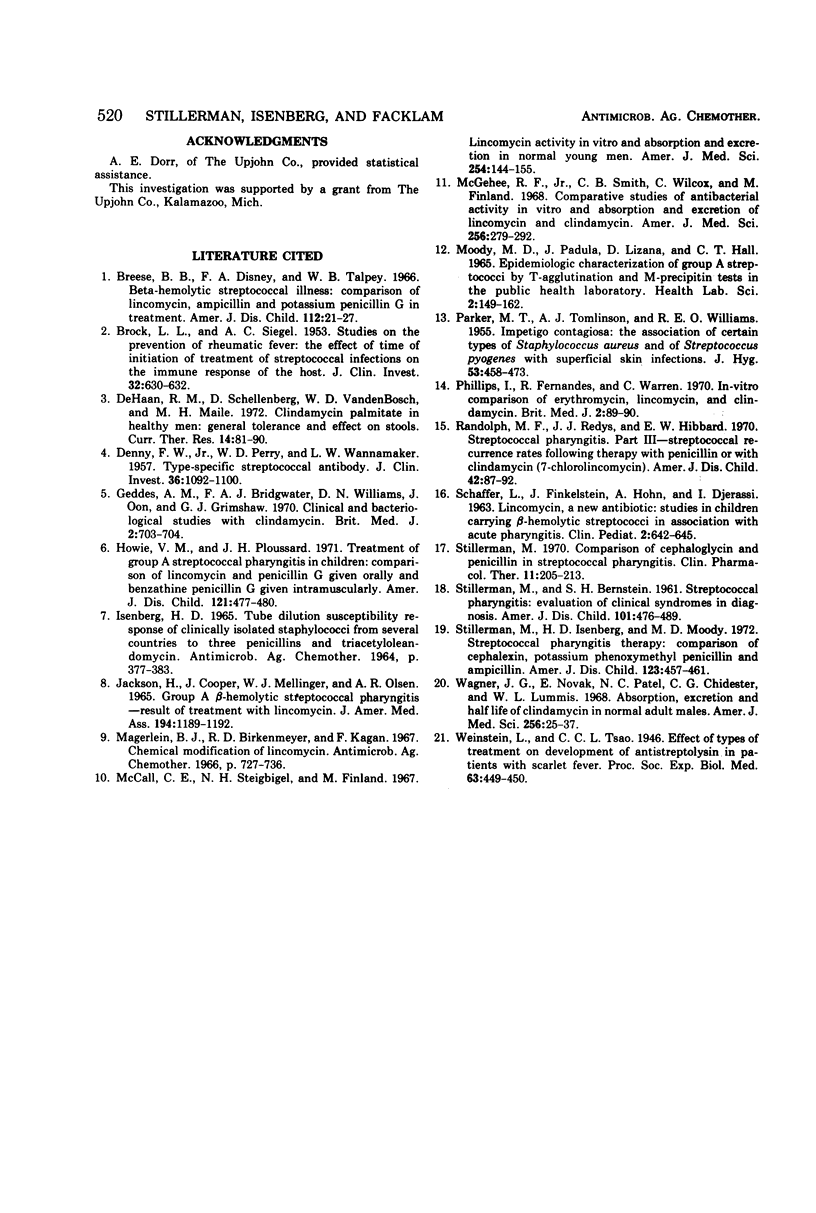
Selected References
These references are in PubMed. This may not be the complete list of references from this article.
- BROCK L. L., SIEGEL A. C. Studies on the prevention of rheumatic fever; the effect of time of initiation of treatment of streptococcal infections on the immune response of the host. J Clin Invest. 1953 Jul;32(7):630–632. doi: 10.1172/JCI102774. [DOI] [PMC free article] [PubMed] [Google Scholar]
- Breese B. B., Disney F. A., Talpey W. B. Beta-hemolytic streptococcal illness. Comparison of lincomycin, ampicillin, and potassium penicillin G in treatment. Am J Dis Child. 1966 Jul;112(1):21–27. doi: 10.1001/archpedi.1966.02090100057004. [DOI] [PubMed] [Google Scholar]
- DENNY F. W., Jr, PERRY W. D., WANNAMAKER L. W. Type-specific streptococcal antibody. J Clin Invest. 1957 Jul;36(7):1092–1100. doi: 10.1172/JCI103504. [DOI] [PMC free article] [PubMed] [Google Scholar]
- De Haan R. M., Schellenberg D., Vanden Bosch W. D., Maile M. H. Clindamycin palmitate in healthy men: general tolerance and effect on stools. Curr Ther Res Clin Exp. 1972 Feb;14(2):81–90. [PubMed] [Google Scholar]
- Geddes A. M., Bridgwater F. A., Williams D. N., Oon J., Grimshaw G. J. Clinical and bacteriological studies with clindamycin. Br Med J. 1970 Jun 20;2(5711):703–704. doi: 10.1136/bmj.2.5711.703. [DOI] [PMC free article] [PubMed] [Google Scholar]
- Howie V. M., Ploussard J. H. Treatment of group A streptococcal pharyngitis in children. Comparison of lincomycin and penicillin G given orally and benzathine penicillin G given intramuscularly. Am J Dis Child. 1971 Jun;121(6):477–480. doi: 10.1001/archpedi.1971.02100170059005. [DOI] [PubMed] [Google Scholar]
- Jackson H., Cooper J., Mellinger W. J., Olsen A. R. Group A beta-hemolytic streptococcal pharyngitis--results of treatment with lincomycin. JAMA. 1965 Dec 13;194(11):1189–1192. doi: 10.1001/jama.194.11.1189. [DOI] [PubMed] [Google Scholar]
- MOODY M. D., PADULA J., LIZANA D., HALL C. T. EPIDEMIOLOGIC CHARACTERIZATION OF GROUP A STREPTOCOCCI BY T-AGGLUTINATION AND M-PRECIPITATION TESTS IN THE PUBLIC HEALTH LABORATORY. Health Lab Sci. 1965 Jul;2:149–162. [PubMed] [Google Scholar]
- Magerlein B. J., Birkenmeyer R. D., Kagan F. Chemical modification of lincomycin. Antimicrob Agents Chemother (Bethesda) 1966;6:727–736. [PubMed] [Google Scholar]
- McCall C. E., Steigbigel N. H., Finland M. Lincomycin: activity in vitro and absorption and excretion in normal young men. Am J Med Sci. 1967 Aug;254(2):144–155. [PubMed] [Google Scholar]
- McGehee R. F., Jr, Smith C. B., Wilcox C., Finland M. Comparative studies of antibacterial activity in vitro and absorption and excretion of lincomycin and clinimycin. Am J Med Sci. 1968 Nov;256(5):279–292. doi: 10.1097/00000441-196811000-00002. [DOI] [PubMed] [Google Scholar]
- PARKER M. T., TOMLINSON A. J., WILLIAMS R. E. Impetigo contagiosa; the association of certain types of Staphylococcus aureus and of Streptococcus pyogenes with superficial skin infections. J Hyg (Lond) 1955 Dec;53(4):458–473. doi: 10.1017/s0022172400000966. [DOI] [PMC free article] [PubMed] [Google Scholar]
- Phillips L., Fernandes R., Warren C. In-vitro comparison of erythromycin, lincomycin, and clindamycin. Br Med J. 1970 Apr 11;2(5701):89–90. doi: 10.1136/bmj.2.5701.89. [DOI] [PMC free article] [PubMed] [Google Scholar]
- Randolph M. F., Redys J. J., Hibbard E. W. Streptococcal pharyngitis. 3. Streptococcal recurrence rates following therapy with penicillin or with clindamycin(7-chlorolincomycin). Del Med J. 1970 Apr;42(4):87–92. [PubMed] [Google Scholar]
- SCHAFFER L., FINKELSTEIN J., HOHN A., DJERASSI I. LINCOMYCIN--A NEW ANTIBIOTIC. Clin Pediatr (Phila) 1963 Nov;2:642–645. doi: 10.1177/000992286300201110. [DOI] [PubMed] [Google Scholar]
- Stillerman M. Comparison of cephaloglycin and penicillin in streptococcal pharyngitis. Clin Pharmacol Ther. 1970 Mar-Apr;11(2):205–213. doi: 10.1002/cpt1970112205. [DOI] [PubMed] [Google Scholar]
- Stillerman M., Isenberg H. D., Moody M. Streptococcal pharyngitis therapy. Comparison of cephalexin, phenoxymethyl penicillin, and ampicillin. Am J Dis Child. 1972 May;123(5):457–461. doi: 10.1001/archpedi.1972.02110110085005. [DOI] [PubMed] [Google Scholar]
- Wagner J. G., Novak E., Patel N. C., Chidester C. G., Lummis W. L. Absorption, excretion and half-life of clinimycin in normal adult males. Am J Med Sci. 1968 Jul;256(1):25–37. doi: 10.1097/00000441-196807000-00004. [DOI] [PubMed] [Google Scholar]


